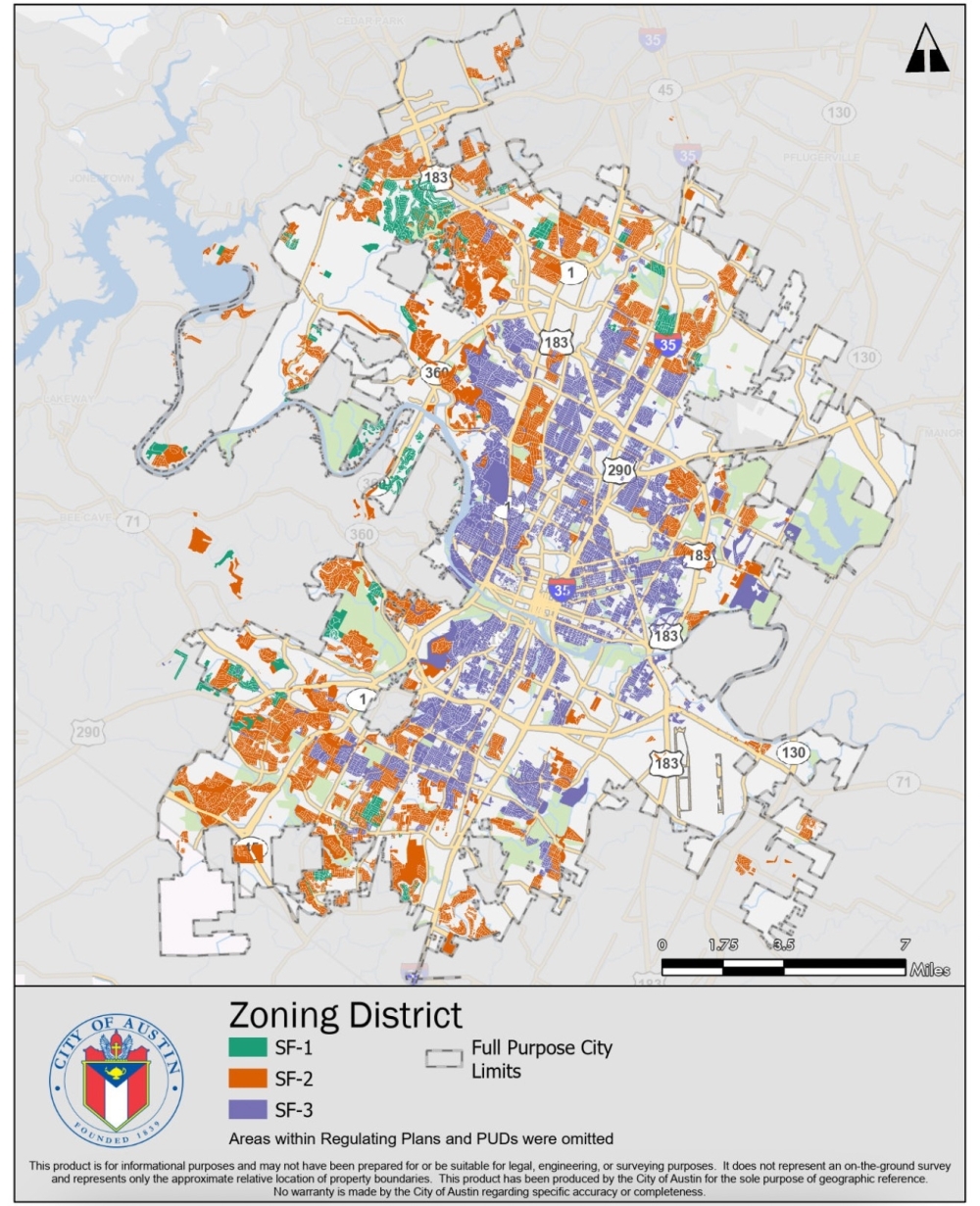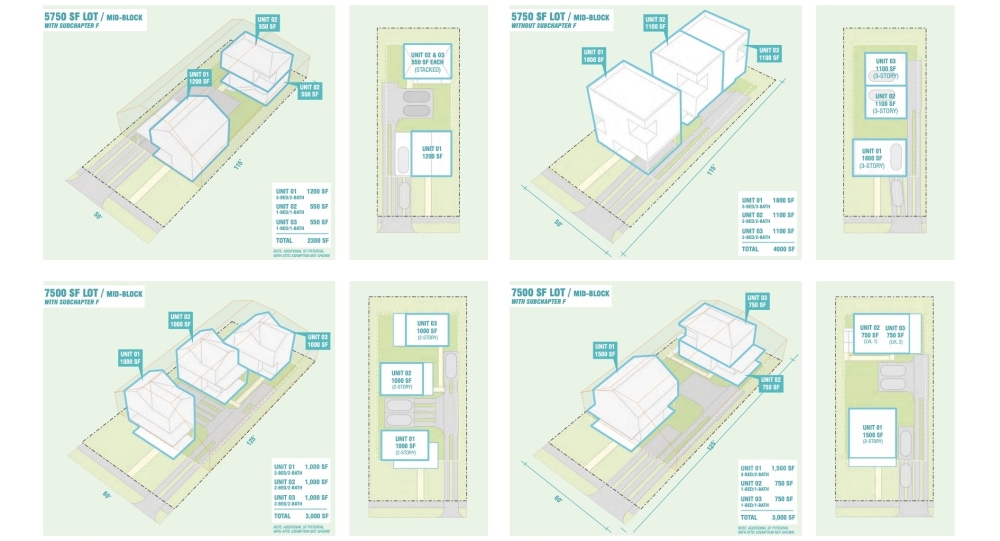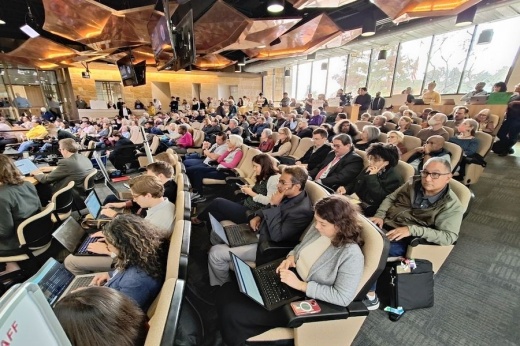Up to three housing units will soon be allowed on Austin's tens of thousands of single-family properties following approval of the first phase of the "HOME" policy on Dec. 7, capping months of often-contentious debate over a plan some city officials hope will help tackle housing affordability concerns.
“I think we can celebrate this moment and this achievement tonight as we create more housing opportunities across the city," said Council Member Leslie Pool, HOME's author.
City Council's 9-2 vote, after more than 13-hours of public comments and review, is not the end of discussions over HOME with a second phase planned for next year. Several residents also warned council that their action will prompt new lawsuits against the city and possible recall efforts to remove elected officials.
The big picture
Raising today's one- and two-unit caps in single-family areas to a three-unit limit is the first of two proposed steps under the Housing Options for Middle-Income Empowerment, or HOME, plan promoted this year by several city officials. Council also OK'd an increase in the number of people who can live together.
HOME changes apply for SF-1, SF-2 and SF-3 zoning categories that cover most of the city.

Such prices are now well beyond the reach of average Austinites; a four-person family earning the median local income can now only afford a home worth up to $380,000, a recent ABoR report found.
What happened
Council passed HOME Phase 1 with several changes proposed by the Planning Commission as well as a handful of their own.
Officials moved to:
- Adjust the allowed size of some housing units under HOME, and their distances from neighbors and property lines;
- Encourage the preservation and planting of trees on residential lots;
- Seek added staff feedback on use of a "preservation bonus" for longstanding structures.
While the new development policy will go into effect later this month, housing construction under the increased HOME allowances won't be allowed until February, giving city staff time to prepare for the change.
Quote of note
"We need to take better care of those caught in the middle who don’t qualify for subsidies. We are losing our workers, our teachers, nurses. And up here on the dais, we see the staffing shortages and recruiting challenges in our city departments and our first responder agencies," Pool said. “HOME Phase 1 is an important step and offers more options, but it’s only the first step. We need HOME Phase 2 if we truly want to create more starter homes to give younger generations a better foothold.”
Those opposed
Voting against HOME and several of the amendments, council members Mackenzie Kelly and Alison Alter said they didn't believe the initiative will end up producing the intended lower-cost, middle-income housing and expressed concerns that the policies may end up harming more Austinites than it helps.
Alter said she worried HOME might actually result in larger, more expensive housing and that its preservation incentives won't be effective.
“The benefits of this policy aren’t going to trickle down, and the main opportunities this will open up will surely be for real estate speculation and preying on the vulnerable," Alter said.
How we got here
In the wake of the past decade's failed land development code rewrite efforts including CodeNEXT and its follow-up, the citywide impacts of HOME have drawn significant community attention this year.
The policy is one of dozens of Austin land-use updates now in progress, many of which were launched by council within the past year.
The city spent about $315,000 to distribute 750,000 notices to Austinites about the series of HOME public hearings that ended this December. A similar process is expected next year for Phase 2.
What they're saying
Public testimony Dec. 7 featured many of the same arguments for and against HOME that have been shared throughout this year.
Supporters hope the updates will help tame Austin's high homeownership costs. Dozens shared their views on the benefits of allowing new houses that could be smaller and more affordable, such as townhomes and triplexes that have been difficult to build or prohibited in many single-family areas.
Many HOME backers highlighted the struggle both longtime Austinites and newcomers face in finding an attainable place to live in the city's current housing market. They also said the middle class-centered proposal could end up helping those who aren't able to make the jump from renting to homeownership, and residents looking to improve or expand housing on their properties.

Several referenced the effects of past civic land-use decisions that pushed Black and Hispanic residents into certain areas of town, especially as those populations have dwindled in recent years. Others said the added housing will greatly strain the city's infrastructure and resources, and change the makeup of Austin's established neighborhoods in undesired ways.
December's public hearing and council discussion can be viewed here.
A closer look
An October city staff analysis cautioned that HOME would "likely reproduce" some of the displacement trends happening today, potentially adding to the insecurity experienced by lower-income Austinites. Alongside the policy update, staff said the city should respond to homeownership and financial disparities, and provide support such as rental and mortgage assistance.
However, housing staff later noted that housing costs and constraints are likely to persist without any changes designed to make single-family construction less costly.
In Austin, some examples of smaller housing types on smaller lots are scattered throughout the city. Developer David Whitworth told council that a handful of smaller homes built under policies resembling HOME—that since rolled back—ended up selling well below new single-family houses in the same neighborhood.
Jake Wegmann, a University of Texas associate professor specializing in land use and affordability, told council that his research found places like Houston saw success with adding denser housing types available at much lower prices than neighboring single-family homes. However, while stating his support for Austin's HOME plan, he said he believes its potential for similar results is still unclear.
A city-commissioned UT study into the high price tag of housing development in Austin released this summer recommended allowing more housing types in single-family areas as one solution to lowering costs.
That study also advised finding ways to lower construction costs through strategies like added workforce training, cutting some of the city's other longtime regulatory limits, improving city development incentive programs, and seeking state support on housing.
Council's December action was praised by supportive groups including Home Builders Association of Greater Austin and ABoR, which called HOME "a bold step in the right direction."
"This initiative is a balanced approach that will create more homeownership and rental options for current and future Austinites, while preserving the character of the Austin we know and love," an ABoR statement read.
What's next?
HOME's second phase—cutting minimum lot sizes for residential construction, potentially by more than half—is set to be considered in the spring.





